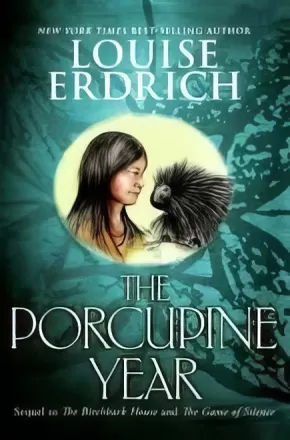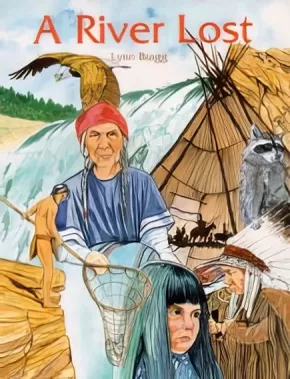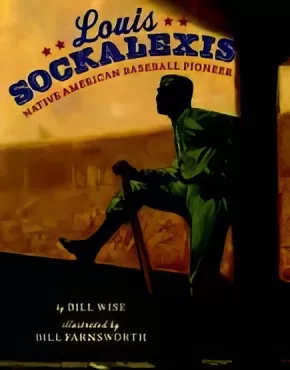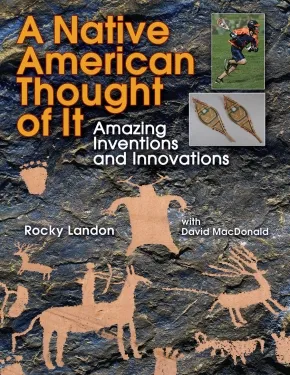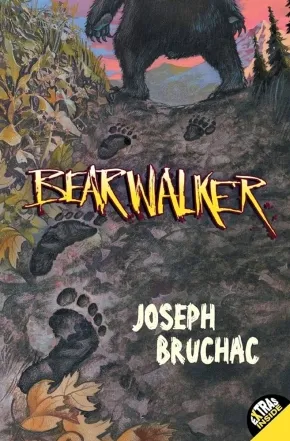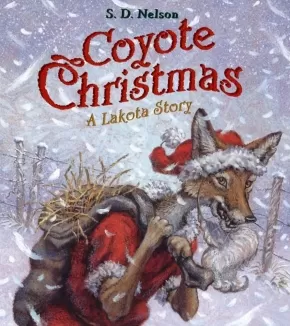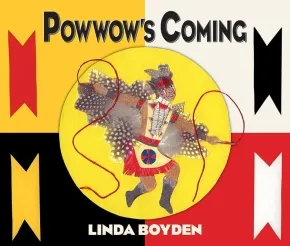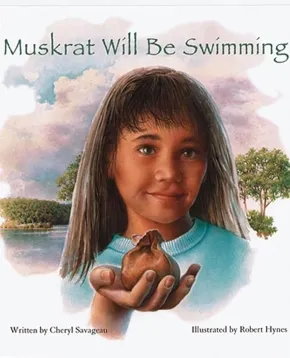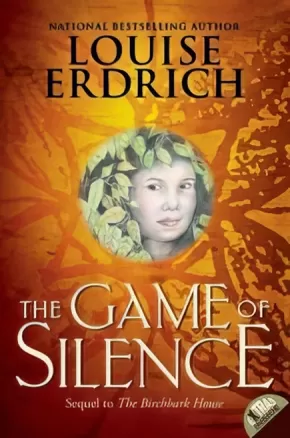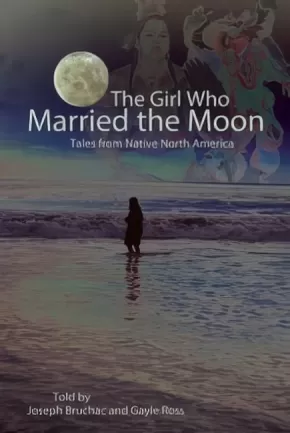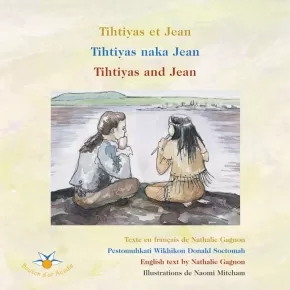
Indigenous Peoples in the United States
316
-
330
of
343 Results;
Sort By
Go To
of 23
Great Musicians from our First Nations
$10.95
Format:
Paperback
Text Content Territories:
Indigenous American; Indigenous Canadian;
ISBN / Barcode: 9781897187760
Synopsis:
Synopsis:
Music is their passion. Follow the journeys of ten talented musicians from the Native community as they make their way to the top. All of them, whether their music is traditional drumming or mainstream rock, bring their own cultural traditions to their music.
Rising stars Shane Yellowbird and Crystal Shawanda are steeped in country music. The Blackfire band combines punk rock with Dine’ music, while Four Rivers Drum has been drumming at powwows for more than fourteen years. Leela Gilday is an award-winning folk artist and Michael Bucher's music protects sacred sites. Contrast classical guitarist Gabriel Ayala with rock guitarist Mato Nanji and learn about the talents of jazz vocalist Jamie Coon and Native American flutist Mary Youngblood.
Educator & Series Information
This book is part of the First Nations Series for Young Readers. Each book is a collection of biographies of First Nations, Métis, and Inuit women and men who are leaders in their fields of work, in their art, and in their communities.
For ages 9-14.
Additional Information
128 pages | 6.00" x 9.00"
The Porcupine Year
$12.50
Artists:
Format:
Paperback
Text Content Territories:
Indigenous American; Native American; Anishinaabeg; Ojibwe (Chippewa);
ISBN / Barcode: 9780064410304
Synopsis:
Synopsis:
Here follows the story of a most extraordinary year in the life of an Ojibwe family and of a girl named "Omakayas," or Little Frog, who lived a year of flight and adventure, pain and joy, in 1852.
When Omakayas is twelve winters old, she and her family set off on a harrowing journey. They travel by canoe westward from the shores of Lake Superior along the rivers of northern Minnesota, in search of a new home. While the family has prepared well, unexpected danger, enemies, and hardships will push them to the brink of survival. Omakayas continues to learn from the land and the spirits around her, and she discovers that no matter where she is, or how she is living, she has the one thing she needs to carry her through.
Richly imagined, full of laughter and sorrow, The Porcupine Year continues Louise Erdrich's celebrated series, which began with The Birchbark House, a National Book Award finalist, and continued with The Game of Silence, winner of the Scott O'Dell Award for Historical Fiction.
Educator & Series Information
This is the third book in the Birchbark House Series, a series of Indigenous juvenile fiction novels written by Ojibwe writer Louise Erdrich. The Birchbark House Series follows a character known as Omakayas and her Ojibwe community.
The books in this series in order include:
The Birchbark House
The Game of Silence
The Porcupine Year
Chickadee
Makoons
Additional Information
224 pages | 5.12" x 7.62"
A River Lost
$11.95
Artists:
Format:
Paperback
Text Content Territories:
Indigenous American; Native American; Sinixt (Arrow Lakes);
ISBN / Barcode: 9780888393838
Synopsis:
Synopsis:
A River Lost is the familiar story of an ancient culture infringed upon and altered forever by modern technology. It is the story of how the construction of the Grand Coulee Dam led to the destruction of a way of life for members of the Arrow Lakes Tribe. Sinee mat and her great-grandmother Toopa tell the engaging story of life on the Columbia River, before and after the dam.
Additional Information
32 pages | 8.50" x 11.00"
Louis Sockalexis: Native American Baseball Pioneer (2 in stock, In reprint)
$14.95
Artists:
Format:
Paperback
Text Content Territories:
Indigenous American; Native American; Penobscot;
ISBN / Barcode: 9781600604287
Synopsis:
Synopsis:
On a Maine summer day in 1884, twelve-year-old Penobscot Indian Louis Sockalexis first fell in love with baseball. As he grew up, Louis honed his skills and dreamed of one day joining a major league team.
Louis encountered opposition at every turn—from the jeers of teammates and the taunts of spectators who thought he had no place in a "white man's sport" to the disapproval of his father, who wanted Louis to focus on tribal life. Louis finally made it to the major league Cleveland Spiders, but racism followed him, until one momentous day in June 1897 at New York's Polo Grounds. Facing off against the most feared pitcher in baseball, Louis proved he belonged in the sport.
Here is the inspiring story of a boy who dared to make his dream a reality. With determination, courage, and quiet dignity, Louis Sockalexis smashed racial barriers and home runs, leaving an indelible mark on America's favorite sport.
Educator Information
Guided Reading: Q
Lexile: AD920L
Interest Level: Grades 1 - 5
Reading Level: Grades 2 - 4
Additional Information
32 pages | 10.50" x 8.25"
A Native American Thought of It: Amazing Inventions and Innovations
$9.95
Format:
Paperback
Text Content Territories:
Indigenous American; Indigenous Canadian;
ISBN / Barcode: 9781554511549
Synopsis:
Synopsis:
Inventiveness and ingenuity from North America's First Nations.
Everyone knows that moccasins, canoes and toboggans were invented by the Aboriginal people of North America, but did you know that they also developed their own sign language, as well as syringe needles and a secret ingredient in soda pop?
Depending on where they lived, Aboriginal communities relied on their ingenuity to harness the resources available to them. Some groups, such as the Iroquois, were particularly skilled at growing and harvesting food. From them, we get corn and wild rice, as well as maple syrup.
Other groups, including the Sioux and Comanche of the plains, were exceptional hunters. Camouflage, fish hooks and decoys were all developed to make the task of catching animals easier. And even games-lacrosse, hockey and volleyball -- have Native American roots.
Other clever inventions and innovations include:
* Diapers
* Asphalt
* Megaphones
* Hair conditioner
* Surgical knives
* Sunscreen.
With descriptive photos and information-packed text, this book explores eight different categories in which the creativity of First Nations peoples from across the continent led to remarkable inventions and innovations, many of which are still in use today.
Educator & Series Information
This book is a part of the We Thought of It series, a series which takes readers on a fascinating journey across the world's second largest continent to discover how aspects of its culture have spread around the globe.
Additional Information
48 pages | 8.50" x 11.00"
Bearwalker
$9.99
Artists:
Format:
Paperback
Text Content Territories:
Indigenous American; Native American; Haudenosaunee (Iroquois); Kanyen'keha:ka (Mohawk);
ISBN / Barcode: 9780061123153
Synopsis:
Synopsis:
Baron has always been fascinated by bears—their gentle strength and untamed power. But the Bearwalker legend, passed down by his Mohawk ancestors, tells of a different kind of creature—a terrible mix of human and animal that looks like a bear but is really a bloodthirsty monster.
The tale never seemed to be more than a scary story . . . until a class camping trip deep in the Adirondacks, when Baron comes face-to-face with an evil being that is all too real.
Reviews
“This fast-paced survival story is a great read for mystery fans, and it also addresses the delicate balance between humans and nature.” — School Library Journal (starred review)
“Bruchac spins a striking story, filled with interesting information about bears, chilling moments around the campfire, and life–or–death chase scenes. Readers will return again and again to this adventure tale.” — Bulletin of the Center for Children’s Books
Additional Information
240 pages | 5.12" x 7.62"
Coyote Christmas: A Lakota Story
$23.95
Artists:
Format:
Hardcover
Text Content Territories:
Indigenous American; Native American; Sioux; Lakota;
ISBN / Barcode: 9780810993679
Synopsis:
Synopsis:
Christmas with a Lakota trick!
A traditional Native American character gets a modern update in this charming Christmas tale.
On Christmas Eve, Coyote wants to find some people to trick out of a hot meal. Sneaky Coyote is known in the Native American tradition as the Trickster. He knows that there's one character people can't refuse on Christmas Eve: Santa Claus! Using straw for a jolly belly and wool for his Santa's beard, the Trickster fools a family into welcoming him to their Christmas meal. But just when he thinks he's gotten away with his ruse, taking their food and leaving the family with nothing, he's foiled by a strange occurrence. Could it be a Christmas miracle?
Coyote's antics, beautifully told and illustrated by S. D. Nelson, will delight readers, and his eventual comeuppance just in time for Christmas makes this a perfect holiday tale.
Educator Information
Recommended for ages 6 to 9
Additional Information
40 pages | 9.50" x 10.50"
Great Athletes from our First Nations
$10.95
Format:
Paperback
Text Content Territories:
Indigenous American; Indigenous Canadian;
ISBN / Barcode: 9780977918300
Synopsis:
Synopsis:
Great Athletes from our First Nations profiles thirteen outstanding athletes in such diverse sports as figure skating, race car driving, skiing and bowling. The athletes featured in this book include: Ross Anderson, downhill skier; Richard Dionne, champion basketball player; Mike Edwards, professional bowler; Shelly Hruska, professional ringette player; Beau Kemp, professional baseball player, etc.
Reviews
"Smoothly-written and enriched with photography and sidebars that give additional information about the sport or athlete."— Kliatt, May 2008
"A must-have in every school and public library, it can be used for cross-cultural education and healthy lifestyles."— Resource Links, June 2007
Educator & Series Information
This book is part of the First Nations Series for Young Readers. Each book is a collection of biographies of First Nations, Métis, and Inuit women and men who are leaders in their fields of work, in their art, and in their communities.
For ages 9-14.
Additional Information
128 pages | 6.00" x 8.92"
Great Women from our First Nations
$10.95
Format:
Paperback
Text Content Territories:
Indigenous American; Indigenous Canadian;
ISBN / Barcode: 9781897187258
Synopsis:
Synopsis:
This book profiles ten outstanding women leaders in the Native community. All of these successful, trailblazing women are stellar role models who have raised the profile of indigenous culture in North America. From heroines of the past to women making new history today, this exciting work of nonfiction reminds readers of the extraordinary contributions of Native Americans to our daily lives.
Educator & Series Information
This book is part of the First Nations Series for Young Readers. Each book is a collection of biographies of First Nations, Métis, and Inuit women and men who are leaders in their fields of work, in their art, and in their communities. For ages 9-14.
Additional Information
89 pages | 6.00" x 8.98"
Powwow's Coming
$29.95
Artists:
Format:
Hardcover
Text Content Territories:
Indigenous American;
ISBN / Barcode: 9780826342652
Synopsis:
Synopsis:
This is a celebration of the contemporary powwow, which provides a rhyming verse to attract young children to the fun one can enjoy at a powwow. Boyden skillfully takes the main points of a powwow and creates anticipation in the charming verse.
Powwow's coming, hear the beat?
Powwow's coming, dancing feet.
Powwow's coming, hear the drum?
Powwow's coming, everyone!
Frustrated as a schoolteacher not being able to find good instructional materials on American Indians, Linda Boyden has bypassed the tired stereotype of Indians on horseback or hunting game and placed them in today's setting of a powwow.
Powwow's Coming provides children with a foundation for understanding and celebrating the enduring culture and heritage of American Indians. Boyden's exquisite cut-paper collage and engaging poem visually place readers within the scenes of a contemporary Native American community while offering a thoughtful look at powwows and their meanings to the Native participants.
Muskrat Will Be Swimming
$12.95
Artists:
Format:
Paperback
Text Content Territories:
Indigenous American; Native American;
ISBN / Barcode: 9780884482802
Synopsis:
Synopsis:
This is a quiet tale of a Native American girl who, with gentle guidance from her grandfather, learns to find strength, not fear, in her identity as a Native person living in an Anglo society. Beautifully illustrated and complete with a Seneca creation story, Muskrat Will Be Swimming demonstrates how the ancient stories of Native American cultures are used to help today's children find their way in the world. It is a treasure for all who have ever dealt with the fear of being different.
Educator Information
Recommended Grades: 3-6.
Additional Information
32 pages | 9.00" x 10.00"
The Game of Silence
$12.50
Artists:
Format:
Paperback
Text Content Territories:
Indigenous American; Native American; Anishinaabeg; Ojibwe (Chippewa);
ISBN / Barcode: 9780064410298
Synopsis:
Synopsis:
Her name is Omakayas, or Little Frog, because her first step was a hop, and she lives on an island in Lake Superior.It is 1850, and the lives of the Ojibwe have returned to a familiar rhythm: they build their birchbark houses in the summer, go to the ricing camps in the fall to harvest and feast, and move to their cozy cedar log cabins near the town of LaPointe before the first snows.
The satisfying routines of Omakayas's days are interrupted by a surprise visit from a group of desperate and mysterious people. From them, she learns that all their lives may drastically change. The chimookomanag, or white people, want Omakayas and her people to leave their island in Lake Superior and move farther west. Omakayas realizes that something so valuable, so important that she never knew she had it in the first place, is in danger: Her home. Her way of life.
In this captivating sequel to National Book Award nominee The Birchbark House, Louise Erdrich continues the story of Omakayas and her family.
Educator & Series Information
This is the second book in the Birchbark House Series, a series of Indigenous juvenile fiction novels written by Ojibwe writer Louise Erdrich. The Birchbark House Series follows a character known as Omakayas and her Ojibwe community.
The books in this series in order include:
The Birchbark House
The Game of Silence
The Porcupine Year
Chickadee
Makoons
Additional Information
288 pages | 5.12" x 7.62"
The Girl Who Married the Moon
$18.95
Format:
Paperback
Text Content Territories:
Indigenous American; Native American;
ISBN / Barcode: 9781555915667
Synopsis:
Synopsis:
This collection of traditional stories explores the significance of a young girl's rite of passage into womanhood. Each of these stories originated in the oral tradition and have been carefully researched. Joseph Bruchac, author of the best-selling Keeper's of the Earth series, and noted storyteller, has been entrusted with stories from elders of other native nations which ensures that the stories collected in The Girl Who Married the Moon are authentic.
The book is broken into four sections, signifying the importance of the number four to Native peoples, and provides an opportunity to hear from a wide variety of Native American tribal nations. These nations have offered to share their stories with their blessing, to celebrate the traditional ways.
Turtle's Race With Beaver
$12.50
Format:
Paperback
Text Content Territories:
Indigenous American; Native American; Haudenosaunee (Iroquois); Seneca;
ISBN / Barcode: 9780142404669
Synopsis:
Synopsis:
Turtle lives in a beautiful little pond with everything a happy turtle needs. But one spring, Turtle awakes from hibernation to discover that her lovely home has been invaded! A pushy beaver takes over Turtle's beloved pond and refuses to share. Instead, he challenges her to a race to determine who can stay. But how can a little turtle outswim a big, powerful beaver? This charming fable of brains versus brawn is a great read for all the young readers in the forest to share!
Additional Information
32 pages | 10.06" x 8.06" | Paperback
Tihtiyas and Jean (1 in stock, in reprint)
$8.95
Artists:
Format:
Paperback
Text Content Territories:
Indigenous Canadian; First Nations; Passamaquoddy (Peskotomuhkati);
Reading Level: N/A
ISBN / Barcode: 9782922203745
Synopsis:
Synopsis:
Tihtiyas and Jean is a trilingual picture book that retells a Passamaquoddy legend and also introduces the idea of contact with the French.
The French title is Tihtiyas et Jean. The English and French translation are provided by Nathalie Gagnon. The Passamaquoddy title is Tihtiyas naka Jean and is translated by Donald Soctomah.
The main character is a 12-year-old Passamaquoddy girl named Tihtiyas. She lives with her extended family near the mouth of the Schoodic River. One day she retells her younger brother the traditional story about Glooscap and Wuchowsen, the Wind-blower. This story explains why the waters are never too rough or too calm when the people fish. While telling this story both children see something in the distance that reminds them of the Wind-blower. They are amazed to see a large boat with white sails approaching the shore. From the boat, men with strange appearance come ashore and speak in a language they do not understand. This marks the contact period between the Passamaquoddy and the French. The girl meets a youth, named Jean, about her age and they share their love of music with each other. The French find themselves without much food and extreme illness over the winter as they settled on Muttoneguis Island (Saint Croix). But their neighbours the Passamaquoddy arrive to bring medicine and nourishing food.
This is a unique story that explores the contact period from the perspective of First Nation children. It also introduces young readers to the Passamaquoddy language.
Educator Information
This book is delivered in a triple-language format of English, French, and Passamaquoddy.
Additional Information
34 pages | 8.00" x 8.00"
Sort By
Go To
of 23



